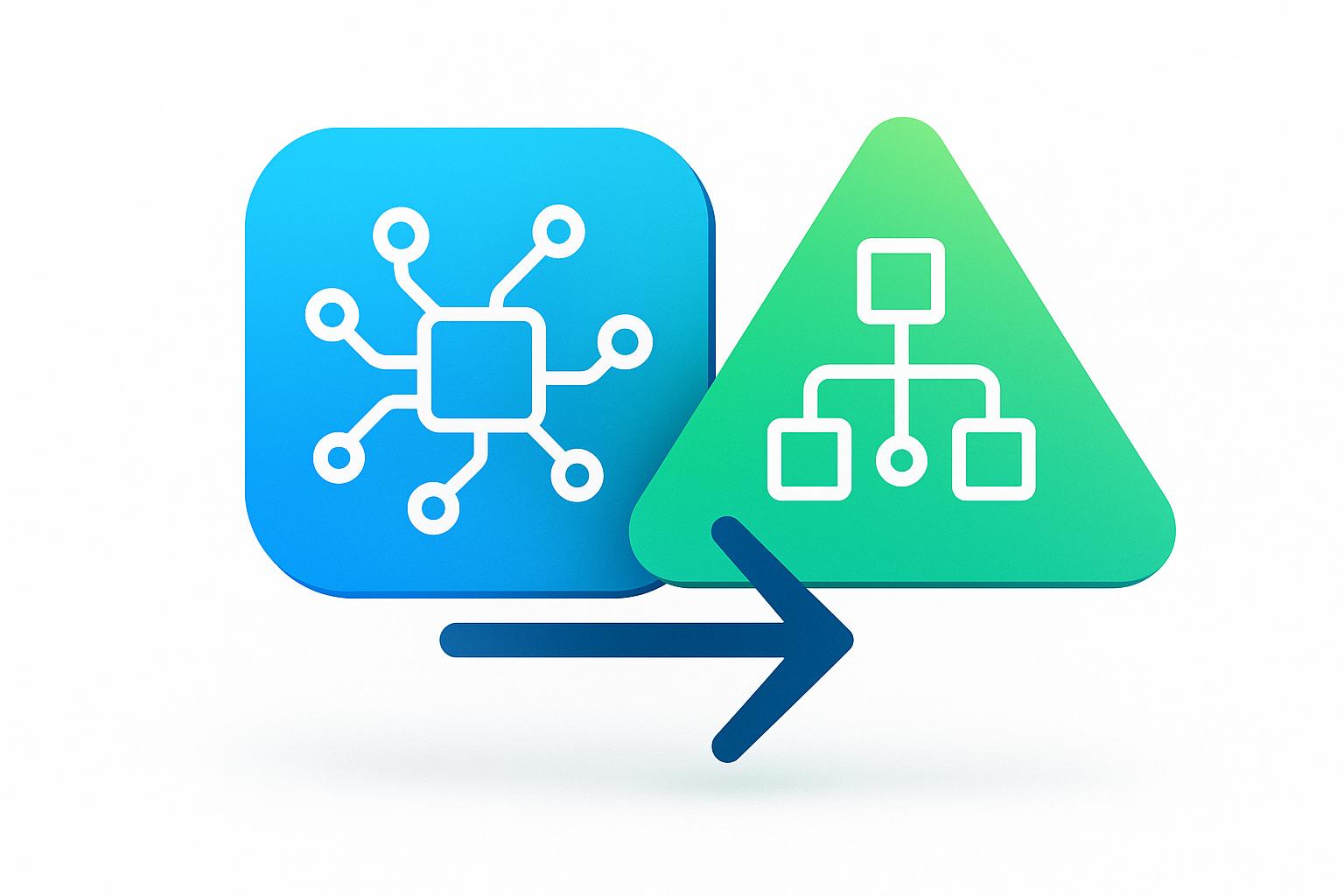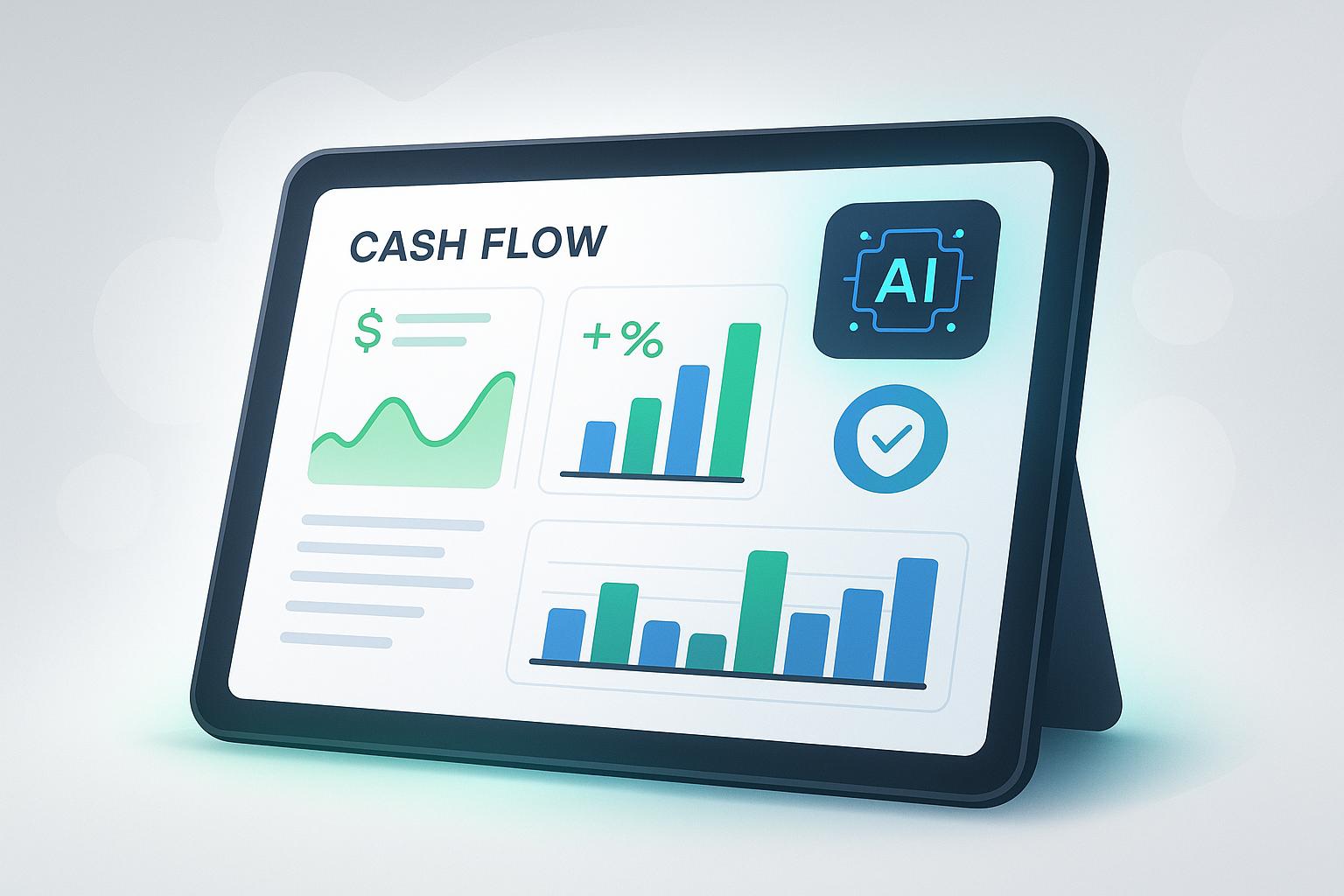AI is transforming how investors track financial KPIs by making the process faster, more accurate, and scalable. Here's what you need to know:
- Speed: AI processes financial data up to 100x faster than manual methods, offering real-time updates.
- Accuracy: Automated systems reduce human errors and ensure precise calculations.
- Integration: AI combines data from multiple sources like financial systems, market trends, and industry benchmarks.
- Predictive Insights: AI models scenarios (best-case, worst-case, actual) to help investors plan effectively.
- Customization: Tailored KPI tracking aligns with investment strategies, risk tolerance, and portfolio needs.
Quick Comparison: AI vs. Manual KPI Tracking
| Feature | Manual Tracking | AI-Powered Solutions |
|---|---|---|
| Processing Speed | Hours to days | Real-time |
| Error Rate | High | Low (automated checks) |
| Data Sources | Limited | Multiple integrated |
| Cost Efficiency | High labor costs | Scalable pricing |
AI tools like Lucid Financials help businesses and investors save time, reduce errors, and make smarter decisions with real-time insights and tailored solutions. Whether you're managing growth or mitigating risks, these platforms simplify financial management for both large and small businesses.
AI Boosts KPI Tracking
AI Technologies in KPI Tracking
Modern AI tools are changing the way businesses monitor and analyze financial KPIs. By using advanced techniques, these systems offer sharper insights and more precise tracking.
Pattern Detection with Machine Learning
Machine learning algorithms are great at spotting intricate patterns in financial data that might escape human analysts. They process large amounts of information quickly, identifying trends and anomalies that could influence investor KPIs.
Here’s what AI-driven pattern detection can do:
- Spot anomalies automatically: AI flags unusual transactions or spending patterns instantly.
- Recognize trends: It identifies new financial patterns across various data sources.
- Link performance metrics: Algorithms connect unrelated metrics to uncover hidden insights.
"Our AI-driven solutions make financial management 100x faster" - Lucid Financials
Market Analysis Using NLP
Natural Language Processing (NLP) converts unstructured market data into useful insights. By analyzing sources like financial news, social media, market reports, and regulatory filings, NLP provides real-time updates on market conditions that could influence KPIs. For instance, Lucid Financials uses NLP to evaluate market sentiment and deliver tailored insights for industries like e-commerce and manufacturing.
Future Trends Through Predictive Models
Predictive modeling is transforming financial forecasting by creating detailed scenarios based on data analysis:
| Scenario Type | Focus Area | Benefits |
|---|---|---|
| Best-Case | Growth opportunities | Highlights ideal conditions for scaling |
| Worst-Case | Risk factors | Aids in planning for potential setbacks |
| Actual | Current performance | Offers realistic benchmarks for progress |
These AI tools go beyond standard forecasting by:
- Delivering real-time insights on burn rate and runway.
- Comparing performance to industry standards.
- Using scenario analysis to refine growth strategies.
- Providing sector-specific metrics like Customer Acquisition Cost (CAC) and valuation details.
With continuous data updates, these predictive models help businesses make smarter, data-backed decisions about their financial strategies.
Improving KPI Measurement with AI
AI is changing how investors track KPIs by making the process more accurate and efficient.
Instant Data Updates
AI-powered tools deliver real-time updates on financial data, eliminating the delays often seen with older methods. This ensures investors always have the latest information for smarter decisions. Here’s what stands out:
- 24/7 monitoring: AI continually tracks financial metrics, updating KPIs as new data flows in.
- Automated notifications: Alerts are sent whenever KPIs hit critical levels, keeping investors informed without constant manual checks.
Reducing Errors
AI significantly cuts down on human errors in KPI tracking. Automated validation ensures calculations are accurate and data reconciles smoothly across systems. This level of precision allows businesses to handle large datasets without the risk of common mistakes.
Handling Large Volumes of Data
AI’s strength lies in its ability to process vast amounts of data with ease. It simplifies complex financial analysis by working across multiple dimensions:
- Managing volume: AI can analyze data from financial statements, market trends, industry standards, and transactions.
- Advanced analysis: It performs complex calculations instantly, making it easier to compare time periods, evaluate industry performance, assess risks, and predict trends.
- Seamless integration: AI combines information from various sources - financial platforms, accounting systems, reporting formats, and market data - into a unified view.
This streamlined approach equips investors with complete, accurate data for better decision-making while helping businesses monitor a wider range of KPIs effortlessly.
sbb-itb-17e8ec9
Custom KPI Tracking Solutions
AI technology has transformed how investors track and analyze their key performance indicators (KPIs). With advanced customization, these systems now deliver insights tailored to specific investor needs and shifting market conditions.
Investor-Specific Metrics
AI platforms can design KPI tracking systems that align perfectly with an investor's unique strategy. These systems adjust based on factors like:
- Investment focus: Whether it’s tracking growth metrics for venture capital or stability indicators for value investing.
- Risk tolerance: Setting personalized alert thresholds based on individual risk preferences.
- Portfolio composition: Customizing metrics to align with specific industries or asset classes.
For example, Lucid Financials tailors its financial models to match industry standards and investor goals, offering a more personalized and actionable approach to KPI tracking.
Market-Responsive KPI Updates
AI systems are built to evolve with the market, ensuring investors always have the most relevant insights. These platforms can:
- Adjust KPI weightings and thresholds in real time to account for market volatility.
- Provide contextual analysis by linking KPI data to broader economic trends, making performance metrics easier to interpret.
By incorporating real-time data, these systems help investors stay ahead of market changes.
New Data Source Integration
AI doesn’t just rely on traditional financial data. It integrates a wide range of information, including industry-specific benchmarks, to give investors a more complete view of their portfolio's performance. This unified approach helps highlight both opportunities and potential risks, offering a deeper understanding of the financial landscape.
AI KPI Tracking Results
AI's role in financial management goes beyond just technical capabilities - it delivers measurable improvements in key performance areas.
AI Financial Tool Examples
Recent use cases of AI-driven KPI tracking systems highlight major efficiency boosts in financial operations. For instance, Lucid Financials achieved a 100x faster processing speed compared to older, manual methods. These results underline the platform's effectiveness across a range of industries.
AI vs Manual Tracking Results
When comparing AI solutions to manual tracking, the differences are striking:
| Metric | Manual Tracking | AI-Powered Solutions |
|---|---|---|
| Processing Speed | Hours to days | Real-time updates |
| Data Integration | Limited sources | Multiple source integration |
| Error Rate | Prone to human error | Automated verification |
| Cost Efficiency | High labor costs | Scalable pricing models |
This table showcases how AI outperforms manual methods in speed, accuracy, and cost-effectiveness.
Small Business AI Implementation
AI tools aren't just for big corporations; small businesses also see major advantages. For SMBs, the benefits include:
- Reduced manual effort: Automates financial tracking tasks
- Improved accuracy: AI ensures reliable data validation
- Flexible pricing: Plans starting at $50 per month
- Instant insights: Real-time visibility into key metrics
"We found a powerful yet simple solution for our financial planning needs, which has been a great addition to our business."
- Refael Shamir, Founder and CEO @Letos
Conclusion: Future of AI in KPI Tracking
Key Advantages
AI is changing the game for KPI tracking by improving speed, accuracy, and scalability. Here are three standout benefits:
- Speed and Efficiency: Processes data up to 100x faster, allowing businesses to make real-time decisions and quickly adapt to market changes.
- Data Integration and Accuracy: Seamlessly connects with tools like QuickBooks, payroll systems, and banks, minimizing errors and offering detailed insights.
- Affordable Scaling: Pricing starts at just $50/month, making these advanced tools accessible for businesses of all sizes.
These features are showcased by some of the top platforms available today.
Lucid Financials Platform Overview

Lucid Financials is a great example of how AI can improve investor KPI tracking. The platform supports a variety of industries with tools designed to simplify financial management and encourage business growth.
Key features include:
- Real-time financial data integration
- Advanced scenario planning
- Industry-specific benchmarking
- Automated investor updates
"We found a powerful yet simple solution for our financial planning needs, which has been a great addition to our business."
- Refael Shamir, Founder and CEO @Letos
For companies looking to improve their KPI tracking, AI-driven tools like Lucid Financials turn financial management from a tedious task into a strategic advantage. Success stories from businesses like Abilisense and Showcase highlight the tangible benefits of these solutions.


